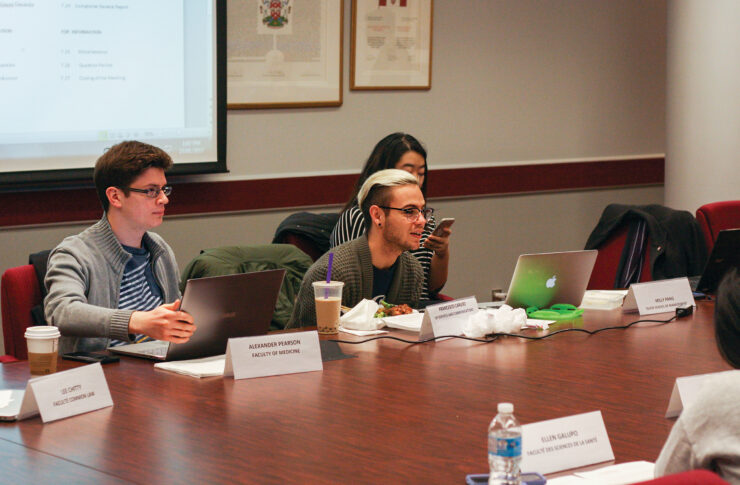Ben Feringa holds magnifying glass to the tiny world of molecular systems
Ben Feringa, 2016 Nobel Prize winner in chemistry, visited the University of Ottawa to talk about molecular systems.
On Nov. 15, Feringa lectured on the Art of Building Small, presented by the U of O’s New Horizons Lecture series. The lecture was part of a two-day visit to the U of O, which explored Feringa’s award-winning research in the realms of synthetic and physical organic chemistry, molecular machines, and light-directed smart drugs.
“It is a long way to molecular complexity,” said Feringa. “The complexity of a cell is way more complex than the whole city of Ottawa, I would argue.”
Feringa, a molecular sciences professor at the University of Groningen in the Netherlands, was awarded the Nobel Prize in 2016 for the design and synthesis of molecular machines.
With the invention of light-activated molecules, his team created nanoscale cars that can walk across surfaces. Researchers have also since used light-activated molecules to drill holes in cancer cells.
To better understand the nanoscale—a single sheet of newspaper is about 100,000 nanometers thick.
At such a small scale, the Feringa research group started by looking at molecular switches and dynamic control. Inspired by the process of vision, the group analyzed eye molecules.
“We know the fact we can see each other is because there are millions of these switches in the optical molecules in the eye,” said Feringa.
However, eye molecules lacked the robustness needed for information storage. So, the Feringa team built overcrowded alkene rotary motors that could switch between wavelengths of light.
The light-activated switches form the basis for delivering smart drugs, which Feringa says could reduce drug resistance.
With the aim of targeted drug treatment, the team added chlorine to a photoswitch, which allowed for an antibiotic to be switched on or off by red light. This could help deliver more sophisticated drug treatments to the broader public.
Feringa now aims to move this research into animal studies.
Though the molecular switches are not yet ready for clinics, Feringa said it may be more important to focus on how researchers can control biological pathways.
“If we can up-and down-regulate certain pathways, we might have a much better idea of how biochemistry works,” he said.
“We have a small molecule—it assembles into these fibres, we organize it in bundles, and then we have a muscle structure,” said Feringa.
The free-standing muscle can pick up a 0.4 mg piece of paper.
Though increasing the strength of these molecular systems needs to be addressed, Feringa said that the possibilities are endless.
Current nanoscience is paving the way for self-healing materials, like self-healing windows and self-cleaning cars.
And nanorobots that move through the bloodstream may not be a far-fetched science fiction idea, but a future possibility, said Feringa. Still, he said that “the best way to predict the future is to invent it.”






